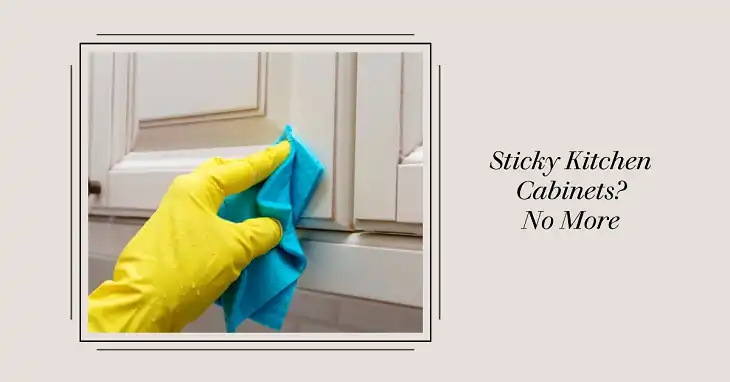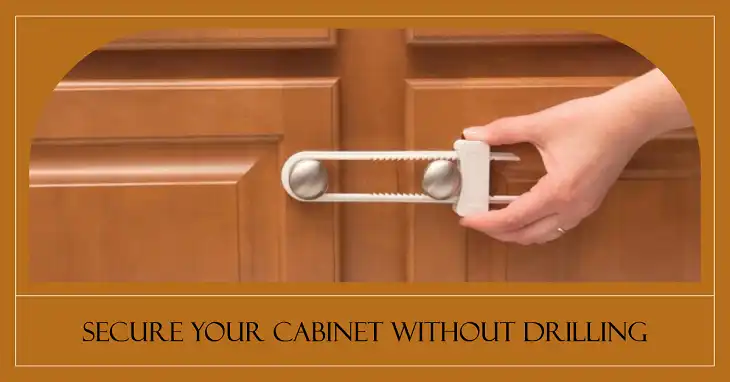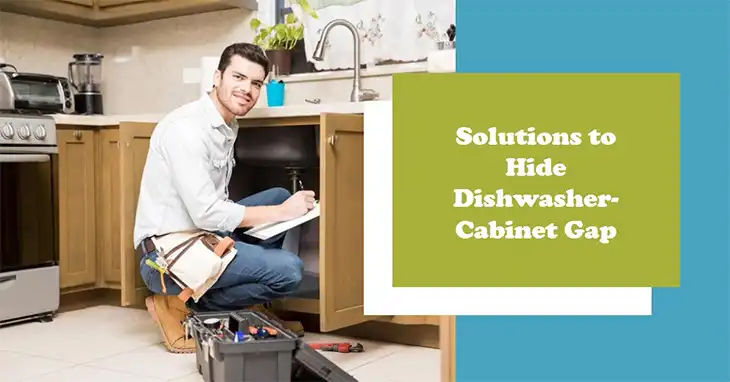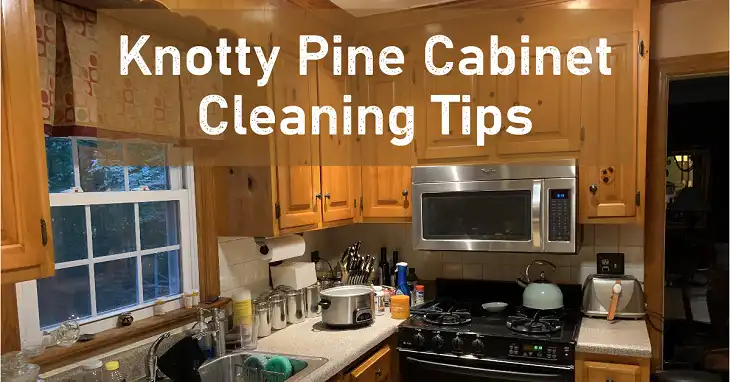Why Are My Kitchen Cabinets Sticky After Cleaning?
If your kitchen cabinets feel sticky even after cleaning, it’s usually due to leftover grease, cleaning residue, or improper cleaning techniques. This stickiness can occur when grease and cooking oils build up over time, creating a stubborn layer that regular cleaning can’t completely remove. Another culprit is using the wrong cleaning products, which may leave behind a film or fail to break down grease properly. In this guide, we’ll explore the common causes and provide effective solutions to eliminate that sticky feeling once and for all.

Why Do Cabinets Get Sticky?
Kitchen cabinets, especially those near the stove, are exposed to a lot of cooking oils, grease, and food splatters. Over time, these substances settle on the cabinet surfaces and mix with dust and dirt, forming a tacky residue that’s difficult to clean. Even if you use a mild soap or cleaner, it might not be strong enough to cut through the built-up grease. Additionally, some cleaning products can create their own sticky layer if not rinsed off properly.
- Common Culprits:
- Grease Buildup: Cooking sprays, oils, and steam contribute to a greasy layer on cabinets.
- Improper Cleaning Agents: Using products like furniture polish or oil-based cleaners can leave a residue.
- Inadequate Rinsing: Not wiping off the cleaner entirely can cause a sticky film to develop.
Effective Solutions for Tackling Sticky Cabinets
The key to removing the sticky layer is choosing the right cleaning method and products. Below are some tried-and-tested solutions that work well for removing grease and other residues from kitchen cabinets.
1. Degreasing with Vinegar and Warm Water Solution
White vinegar is a natural degreaser that cuts through tough grease without leaving a residue. It’s especially effective for cabinets made of wood or laminate.
- How to Use: Mix equal parts of white vinegar and warm water in a spray bottle. Spray generously on the sticky areas and let it sit for 5-10 minutes. The vinegar will help dissolve the grease and break down the sticky layer. Afterward, use a soft sponge to scrub the area gently, then wipe with a clean, damp cloth to remove any remaining residue.
- Pro Tip: If the vinegar smell is too strong, add a few drops of essential oil like lemon or orange to the solution. These oils are also natural degreasers and can enhance the cleaning power.
2. Baking Soda Paste for Stubborn Sticky Spots
For those sticky spots that just won’t budge, a baking soda paste can work wonders. Baking soda is slightly abrasive and helps scrub away grime without scratching the cabinet surface.
- How to Make the Paste: Combine 1 part baking soda with 2 parts warm water to form a thick paste. Apply it to the sticky areas using a soft cloth or sponge. Let it sit for 5 minutes, then scrub gently in a circular motion. Wipe off with a damp cloth and dry the surface thoroughly.
- Pro Tip: Avoid using baking soda paste on high-gloss or lacquered cabinets, as it may dull the finish.
3. Dish Soap and Warm Water for Everyday Cleaning
If your cabinets aren’t too sticky but feel slightly tacky, a simple dish soap and warm water solution can be effective. Dish soap is designed to cut through grease without damaging surfaces.
- Application Method: Mix a few drops of dish soap in a bowl of warm water. Dip a soft cloth in the solution and wring it out until it’s just damp. Wipe down the cabinets thoroughly, then go over the area again with a cloth dipped in plain water to rinse off any soap residue.
- Pro Tip: Always follow up with a dry cloth to prevent water damage, especially on wooden cabinets.
Preventing Sticky Buildup on Kitchen Cabinets
After you’ve successfully removed the sticky residue, it’s crucial to prevent it from coming back. Regular maintenance and proper cleaning techniques can help keep your cabinets looking pristine.
- Clean Cabinets Weekly: Use a mild cleaner like diluted vinegar or dish soap to wipe down cabinets once a week. This prevents grease from accumulating and hardening over time.
- Avoid Oil-Based Products: Skip furniture polish or oil-based cleaners on kitchen cabinets, as they can leave a sticky film.
- Use a Degreaser After Heavy Cooking: If you’ve been frying or using a lot of oil, wipe down the cabinets immediately with a degreaser to remove any splatters.
FAQs
1. Why are my cabinets sticky after cleaning with dish soap?
Dish soap, while effective for removing dirt and grease, can leave a film if not rinsed off properly. This film attracts dust and dirt, creating a sticky layer. Always rinse with plain water after using dish soap.
2. Can I use vinegar on all types of kitchen cabinets?
Yes, vinegar is generally safe for most cabinet types, including wood, laminate, and painted surfaces. However, avoid using it on unfinished or waxed wood, as the acid can damage the finish.
3. What’s the best way to prevent grease buildup on cabinets?
Regular cleaning is the best prevention. Wipe down your cabinets weekly with a gentle cleaner like a vinegar and water solution. Also, use the range hood whenever cooking to minimize grease particles settling on surfaces.
4. Why does baking soda work for sticky cabinets?
Baking soda is mildly abrasive, which helps scrub away stubborn residues. It’s also alkaline, meaning it reacts with acidic grease, making it easier to remove.
5. Are commercial degreasers safe for kitchen cabinets?
Most commercial degreasers are safe if used correctly. Choose a degreaser specifically designed for kitchen use and always test on a small area first. Avoid using on painted or varnished surfaces unless specified as safe.
Final Thoughts
Sticky kitchen cabinets can be frustrating, but with the right approach, you can easily restore them to their original state. Whether you opt for natural solutions like vinegar and baking soda or choose a commercial cleaner, the key is thorough cleaning followed by proper maintenance. Remember to avoid harsh chemicals that might damage your cabinets, and always rinse off any cleaner to prevent future stickiness. By incorporating these cleaning methods into your routine, your kitchen cabinets will stay clean, fresh, and free from sticky residue year-round.






